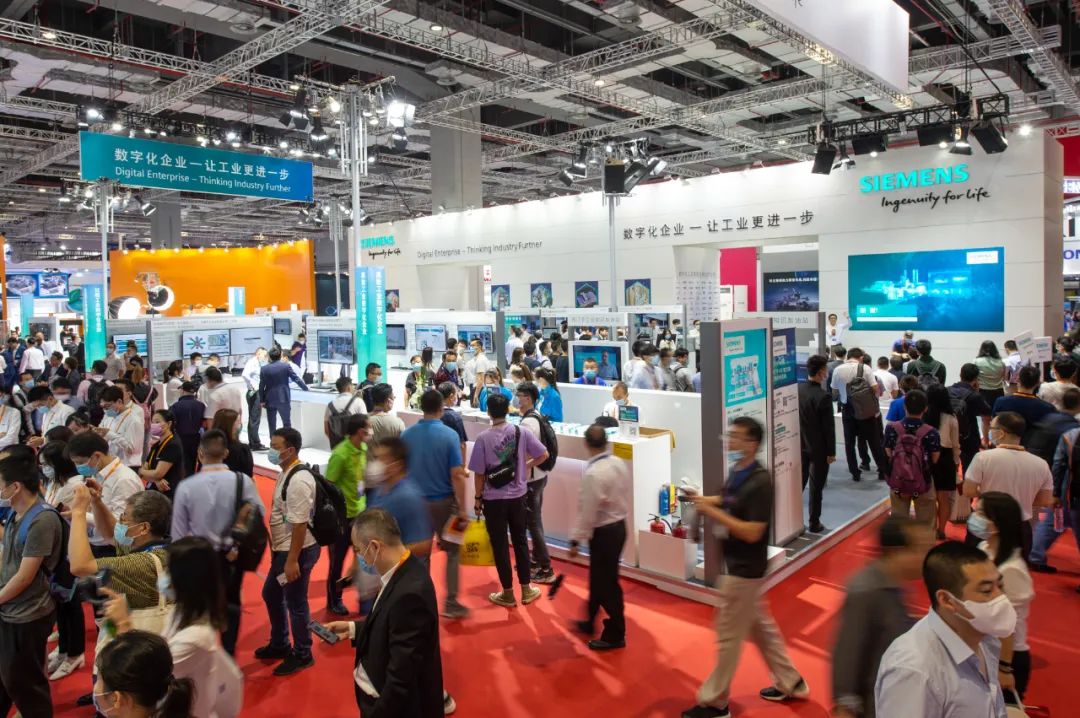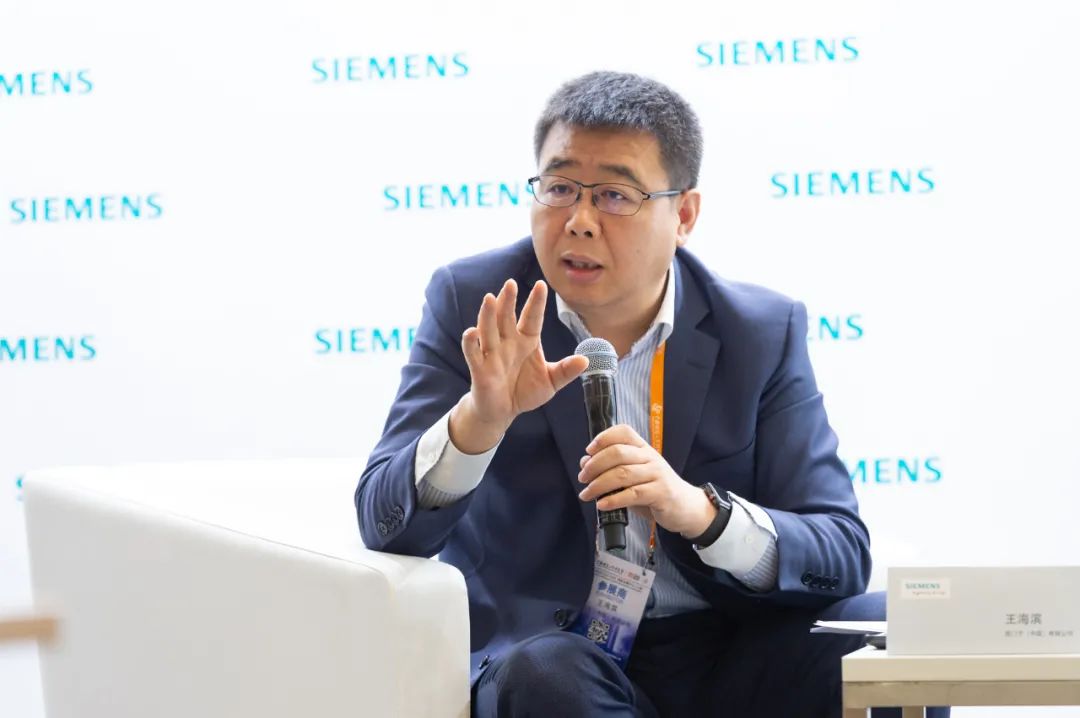

How can digitalization make the industry go further?
In the 2020 CIIF, among the crowded crowd, what you can feel is the digital heat wave that is more turbulent than the crowd. An endless stream of exhibitors, active and enthusiastic explanations and exchanges, new product releases one after another, and rounds of heavy cooperation...all of these are in stark contrast to the manufacturing industry that was almost stagnant at the beginning of the year .
The reason why this CIIF can focus so much attention and attract so much traffic is not only because people stayed at home for too long in the first half of the year, but also because more and more companies have deeply realized the infinite potential of digitalization. potential——During the epidemic, those companies that have achieved good or even excellent results in digital transformation are often resilient enough to deal with risks and uncertainties, so many business leaders who are still hesitant have begun to make up their minds to seek transformation and upgrading. Correspondingly, solution providers also timely brought many digital "secret weapons" and practical examples.
This year, Siemens, a veteran industrial giant, made its debut at the 2020 China International Industry Fair with the theme of "Digital Enterprise - Taking Industry Further", fully demonstrating the latest progress and application results of its digital enterprise platform. At the media communication meeting that day, Wang Haibin, executive vice president of Siemens (China) Co., Ltd. and general manager of Siemens Greater China Digital Industry Group, also shared Siemens' latest views on digitalization for the reporters present.

The construction of a digital palace is not a one-day effort
If we compare digitalization to a grand palace, then the construction of this palace is obviously not a one-day effort. Even if all the enterprises that have started construction are still under construction, everyone must clearly outline in their minds in advance what the palace will look like after several years of hard work——Therefore, digital transformation is inseparable from top-level design, and if you want to do a good job in top-level design, you cannot do without the support of methodology.
In the view of Siemens, a company usually involves four value chains in the shape of rice: the first is the whole life cycle value chain from product research and development, manufacturing to final delivery; the second is from customer orders to production orders and then From the value chain to order delivery; the third is the integrated value chain of equipment and production lines; the fourth is the integrated value chain of the smart factory life cycle. If you want to build a digital enterprise, you actually need to start with these four value chains and make a comprehensive consideration.
At present, almost no company can provide customers with a package of end-to-end services from hardware to software like Siemens.At this CIIF, Siemens further demonstrated its end-to-end digital solutions from assessment, consulting, integration implementation to optimization services.
Based on strong technical expertise and industry experience, Siemens has planned a complete smart factory informatization solution for Laojiao Co., Ltd., which is seeking digital opportunities in traditional industries, covering blueprint planning, architecture construction, roadmap formulation, and automation data integration standards, Many dimensions, such as IT infrastructure, software, dispatch center, and smart park, help it clarify the direction and thinking of digital construction. Siemens' newly established Advanta, which focuses on the Internet of Things service business, also participated, and successfully completed the Laojiao supply chain center command and dispatch platform and application planning management consulting project. The project planning spans 5 years and involves more than 15 subsystems.
Another typical case is Huaxing Glass. Since 2018, Siemens has provided Asia's largest daily-use container glass company with evaluation, consulting, and implementation of digital solutions and services. The two parties hope to use the digital factory of Huaxing Glass Foshan Headquarters Base as a model to gradually realize the digital transformation, interconnection and production and manufacturing information system engineering construction of 15 subordinate factories' kilns and production lines, and build a digital lighthouse factory in the daily container glass industry.
Digital twins help create value
At the Siemens booth, in addition to concepts and examples involving the digital transformation of discrete, process, and hybrid industries, Siemens also took SEWC, its first digital factory outside of Germany, as an example to demonstrate how the digital twin technology can improve product quality and production scheduling. Create value for the enterprise in aspects such as delivery and production efficiency.
The so-called digital twin is the digital mirror image of the physical entity. It uses digital technology to map the information of objects, systems, and processes into the digital system in real time, and performs virtual simulation of products, manufacturing processes, and even the entire factory, so that enterprises can understand the status of assets in real time, respond to changes, and improve business operations.
In SEWC, the digital twin technology was used to optimize the design of the new production line, and the production capacity of the production line was increased by 16%; the digital twin technology was used for virtual debugging and robot offline programming, and the debugging time of the equipment was shortened by 30%; the use of digital twin technology continued to improve The comprehensive efficiency of mixed line production has increased the production capacity by 10%.
In addition, Wang Haibin also added and shared many benefits that digital twins can bring to enterprises during the interview.

Take the research and development process as an example. In the past, after the product design was completed, the company needed to produce and debug the prototype, and then found many problems, so they had to go back to the design side to modify it, and then re-produce the second prototype... Now , through the digital twin technology, R&D personnel can design machines and equipment in a computer environment and realize virtual debugging, so that the machines can run as if they are in an industrial site, and various problems in the design can be found in the computer, and the modification can be completed efficiently, thus greatly saving R&D time.
Companies can benefit from digital twins even if they do not produce machines themselves. Taking end users as an example, their management needs to know the operation status of equipment, product quality, energy consumption of the production line, various process parameters, etc... and the digital twin of the production line can easily collect these key data and display them on the cloud , and finally realize the full traceability of the product.
Wang Haibin said: "Whether it is a research and development person, a process planning person, a service person or a device management and maintenance person, as long as everyone understands the essence of digital twins, they can imagine digital twins in their fields of work. What does it mean, and what tangible changes and benefits can it bring.”
Digital transformation is inseparable from a good ecosystem
As mentioned above, the construction of a digital palace is a large project, and it is impossible to achieve it with only one company. Therefore, it is also very important to promote the development of the ecosystem.
This year, Siemens invited for the first time Shanghai Shangshi Longchuang Intelligent Technology Co., Ltd., Shanghai Huaixin Intelligent Technology Co., Ltd., Zhejiang Zhongtuo Hekong Technology Co., Ltd., Shenzhen Rongke Technology Co., Ltd., Beijing Kangfu Technology Co., Ltd., Zhejiang Huazhang Many partners such as Technology Co., Ltd. jointly presented comprehensive digital capabilities covering many industries at the Siemens booth. In addition, Siemens also demonstrated its co-creation achievements and successful practices with industrial enterprises such as Laojiao and Huaxing Glass, helping to promote the large-scale promotion of China's industrial digital transformation.
Wang Haibin said: "Siemens has been rooted in China's industry for more than 100 years. It has not only built a digital enterprise platform including industrial software and hardware product portfolios, cloud platforms, and cutting-edge technologies, but is also committed to building a partner ecosystem covering the entire industry chain. We hope that with the help of Siemens' comprehensive business portfolio and practical capabilities, we can co-create value with more Chinese customers and partners, and provide new momentum for China's industry to further move towards intelligent manufacturing."
Author: Sophia
IoT think tank original
